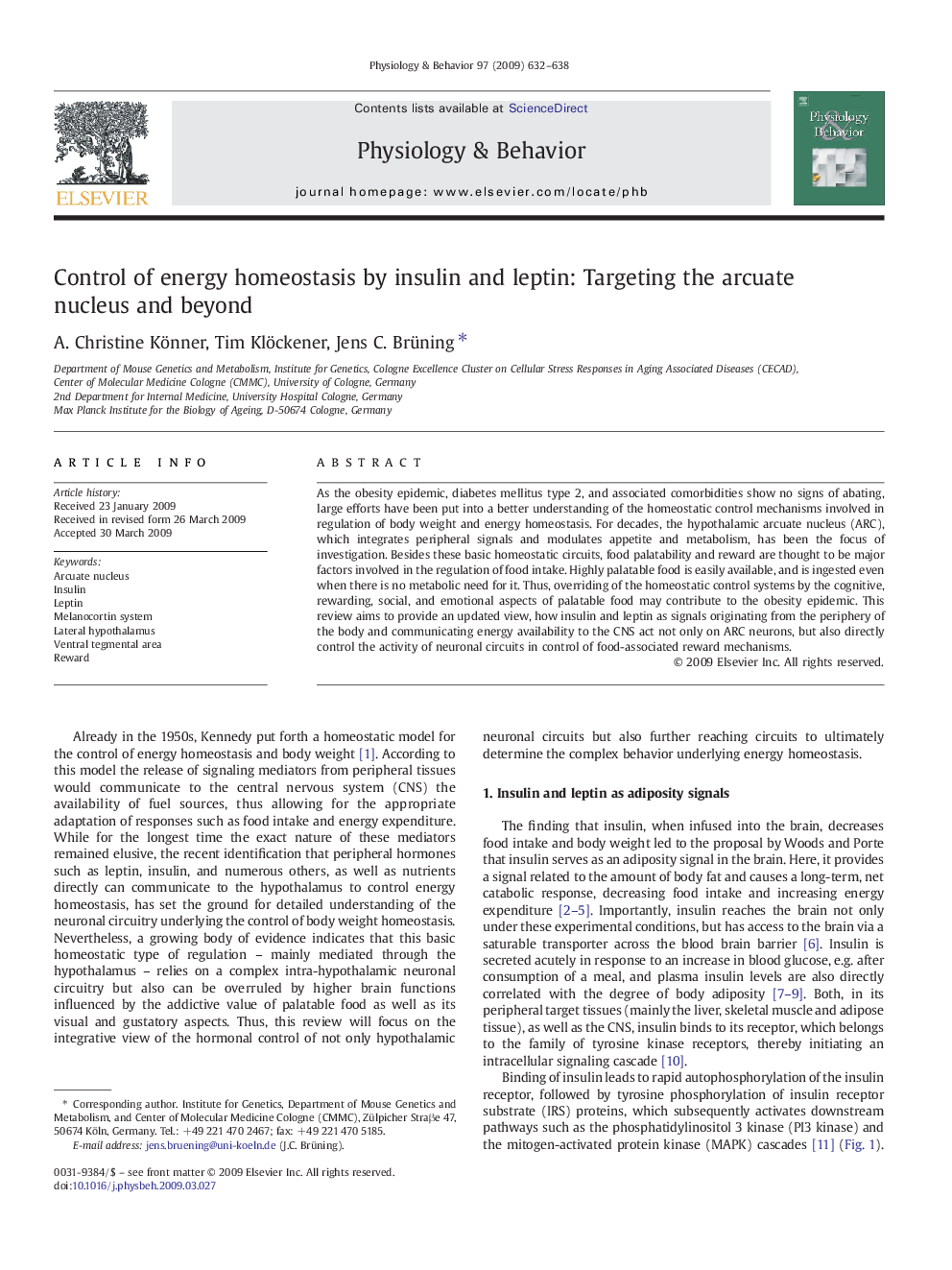| Article ID | Journal | Published Year | Pages | File Type |
|---|---|---|---|---|
| 2845269 | Physiology & Behavior | 2009 | 7 Pages |
As the obesity epidemic, diabetes mellitus type 2, and associated comorbidities show no signs of abating, large efforts have been put into a better understanding of the homeostatic control mechanisms involved in regulation of body weight and energy homeostasis. For decades, the hypothalamic arcuate nucleus (ARC), which integrates peripheral signals and modulates appetite and metabolism, has been the focus of investigation. Besides these basic homeostatic circuits, food palatability and reward are thought to be major factors involved in the regulation of food intake. Highly palatable food is easily available, and is ingested even when there is no metabolic need for it. Thus, overriding of the homeostatic control systems by the cognitive, rewarding, social, and emotional aspects of palatable food may contribute to the obesity epidemic. This review aims to provide an updated view, how insulin and leptin as signals originating from the periphery of the body and communicating energy availability to the CNS act not only on ARC neurons, but also directly control the activity of neuronal circuits in control of food-associated reward mechanisms.
